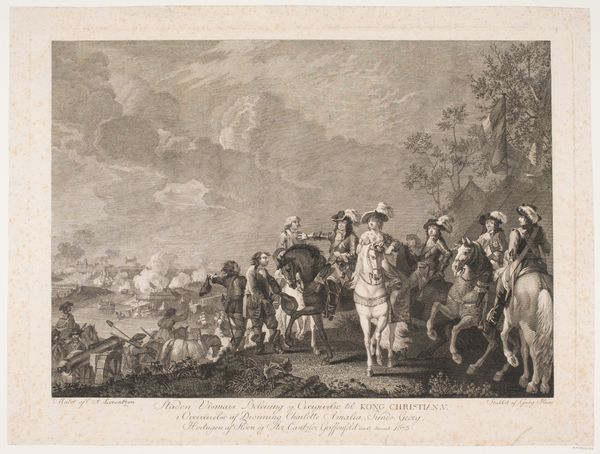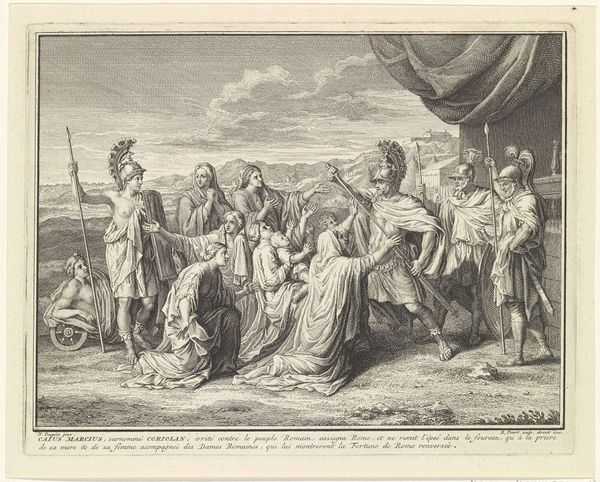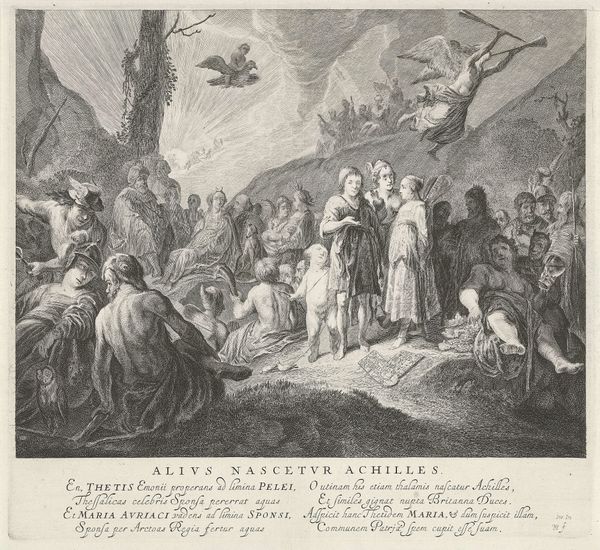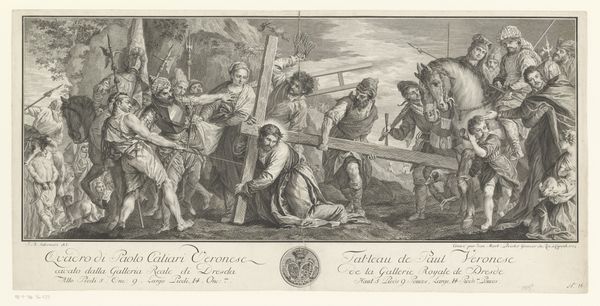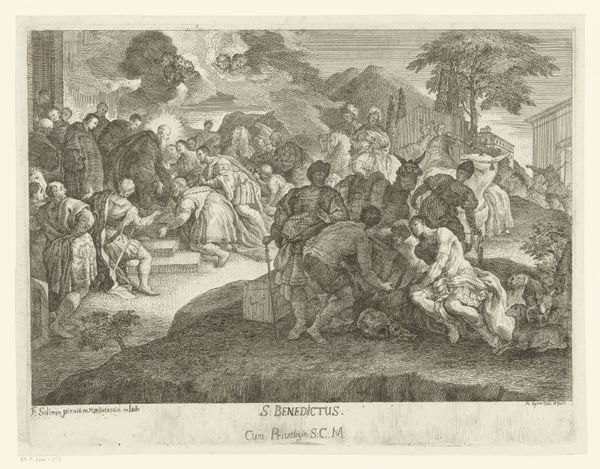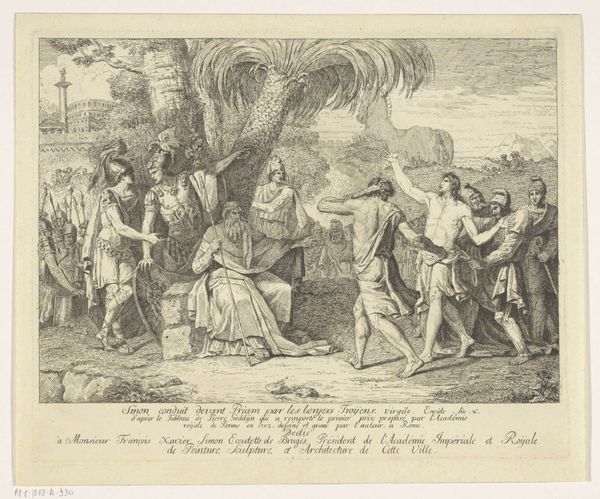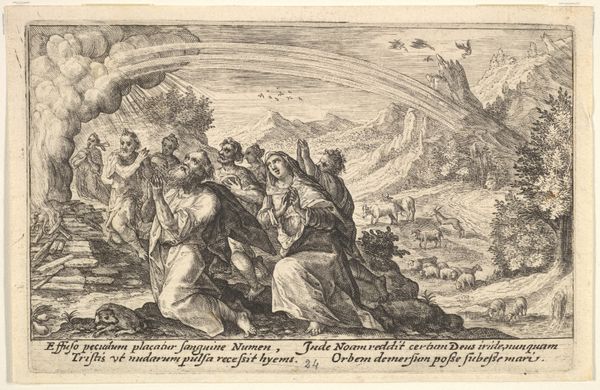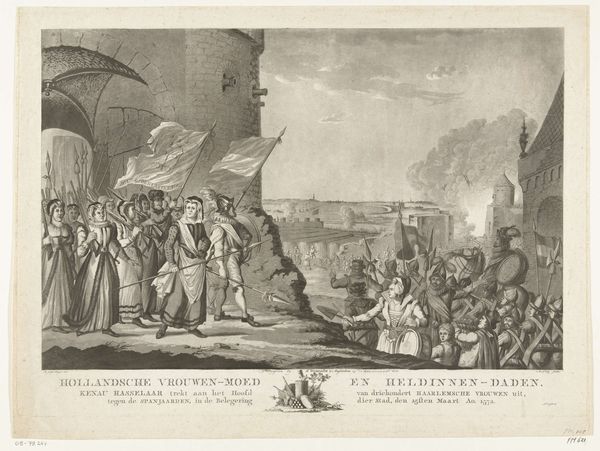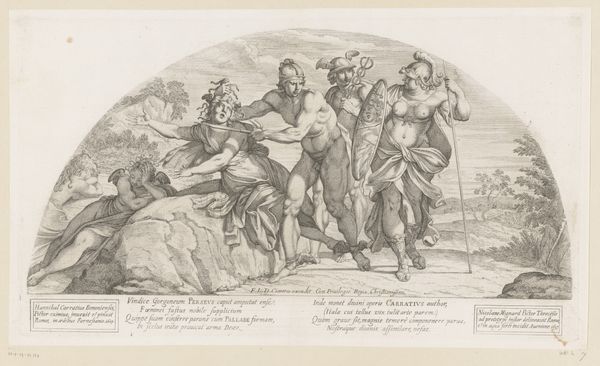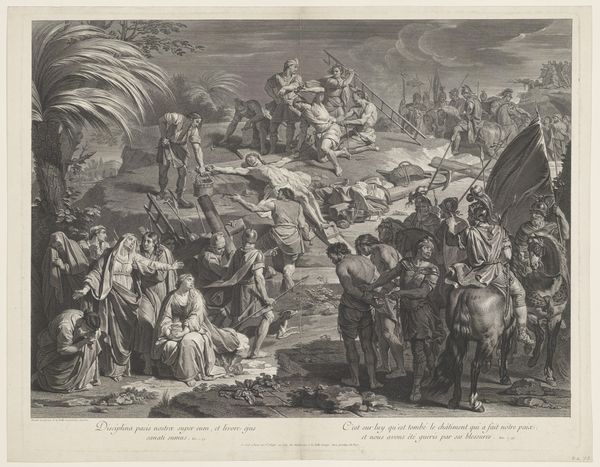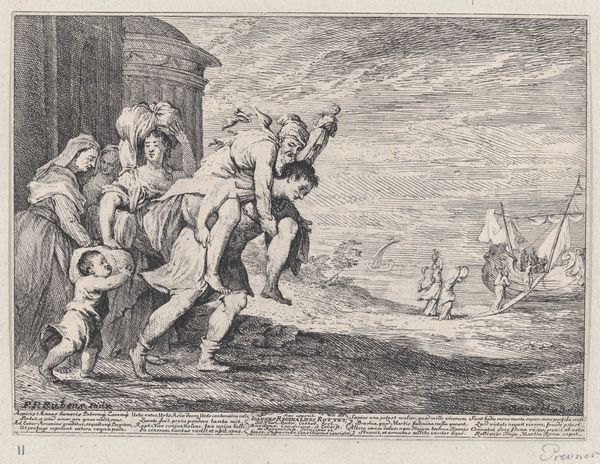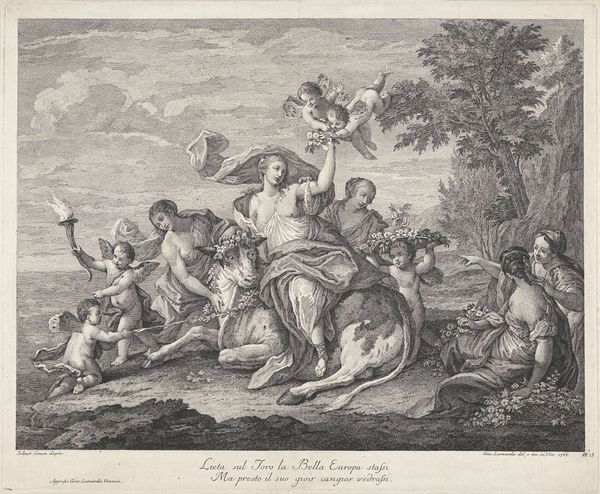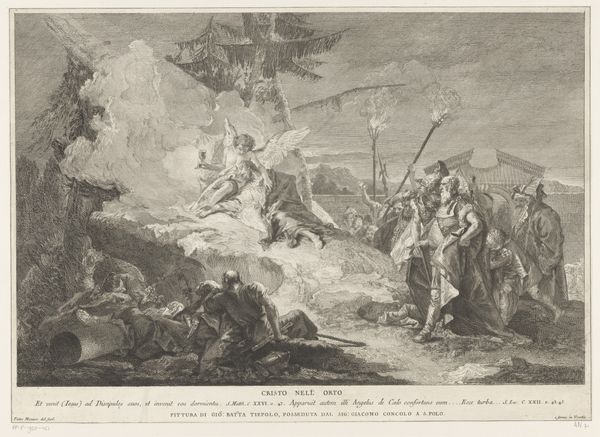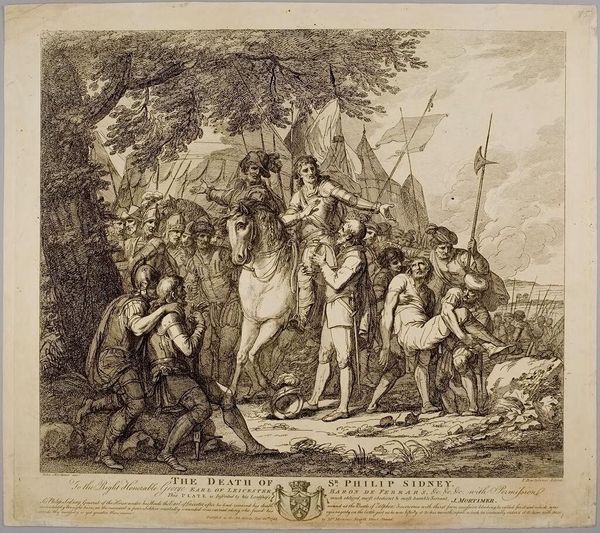
Arrival of Telemachus at the Island of Calypso 1744 - 1795
0:00
0:00
Dimensions: sheet: 7 5/16 x 9 1/8 in. (18.5 x 23.2 cm)
Copyright: Public Domain
Curator: Before us, we have an engraving titled "Arrival of Telemachus at the Island of Calypso." Antoine Jean Duclos created this piece sometime between 1744 and 1795. It resides here at the Metropolitan Museum of Art. Editor: It strikes me as an intriguing composition. The figures are rendered with fine detail, almost hyper-realistic in their classicism. I see the dynamic contrast between the light, airy figures and the darker landscape on either side creates a strong focal point. Curator: Indeed. The narrative depicted is of course Telemachus's arrival as recounted in the Odyssey, a story frequently revisited in art and literature during this period. It’s part of a broader artistic engagement with classical antiquity. Calypso’s island is presented here as a liminal space. Editor: The contrast between the armored Telemachus and Calypso’s nymphs really emphasizes this liminality, like two worlds colliding. I can sense tension just within those choices of line and form; Telemachus's stance and even his heavy garments clash so markedly against the lighter draping and looser poses of the female figures. This builds suspense. Curator: Absolutely. This interpretation invites viewers to contemplate the complexities of desire and obligation within a mythological framework. The art's formal construction is itself deeply implicated in the power dynamics it presents. Editor: Yes, and it highlights how Duclos uses this established composition to investigate and perhaps challenge the gendered dynamics of power within his own context. The scale of the work really does invite the viewer to imagine Telemachus negotiating unfamiliar terrains, both physical and social, and those areas beyond the shore become crucial in his encounter with Calypso’s allure. Curator: His classical and idealised interpretation suggests the broader cultural and political preoccupations during the 18th century—revisiting foundational narratives to articulate and reinforce existing power structures. The composition's focus isn't solely aesthetic; it's deeply intertwined with contemporary discourse. Editor: I’ve come away seeing beyond a classical narrative. I initially thought it an engagement in aesthetics, but considering its historical backdrop offers an interesting, expanded view on its intent. Curator: And examining the deliberate rendering helps us explore broader aspects of its purpose—to underscore dominant values and perpetuate a social perspective.
Comments
No comments
Be the first to comment and join the conversation on the ultimate creative platform.
